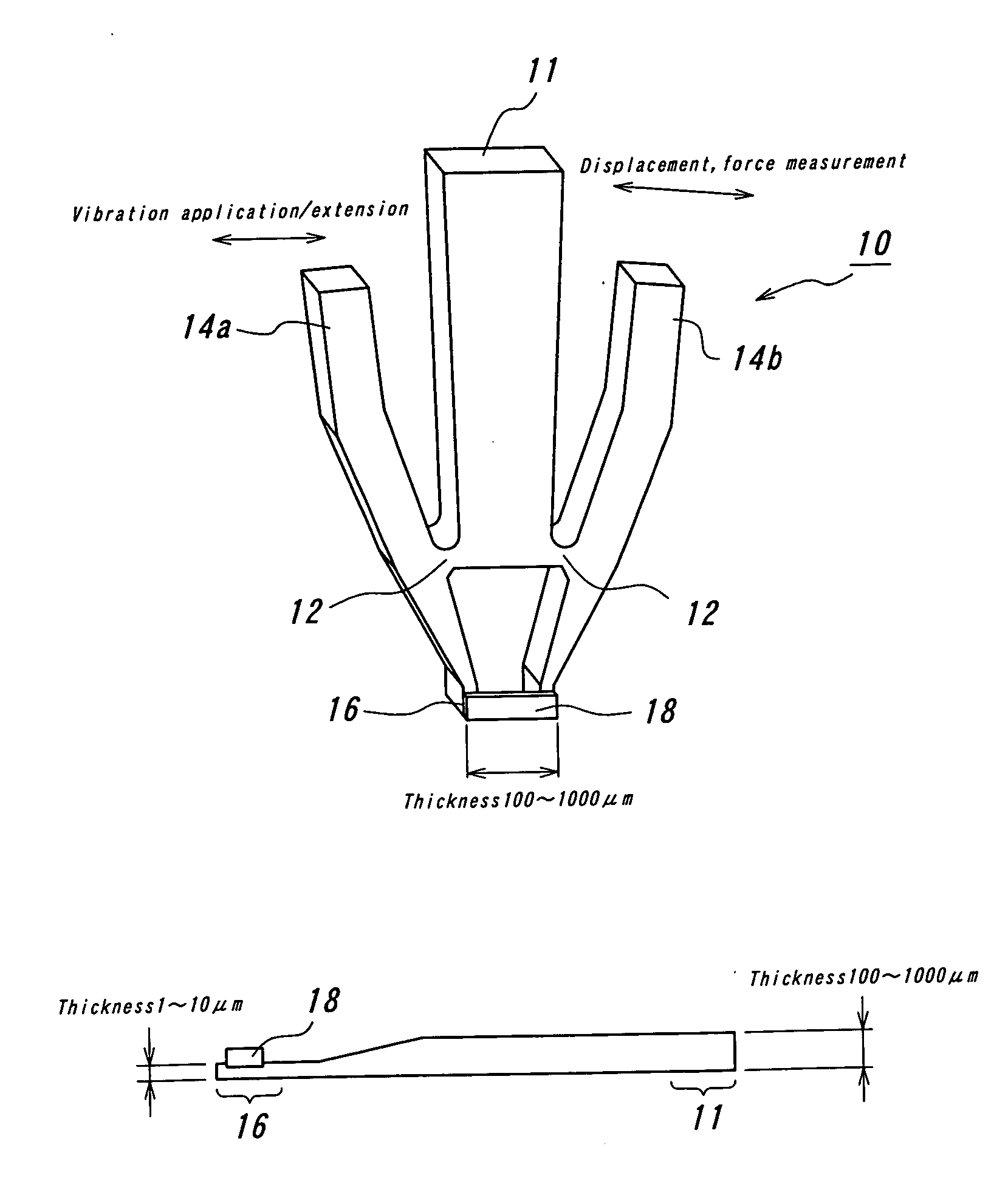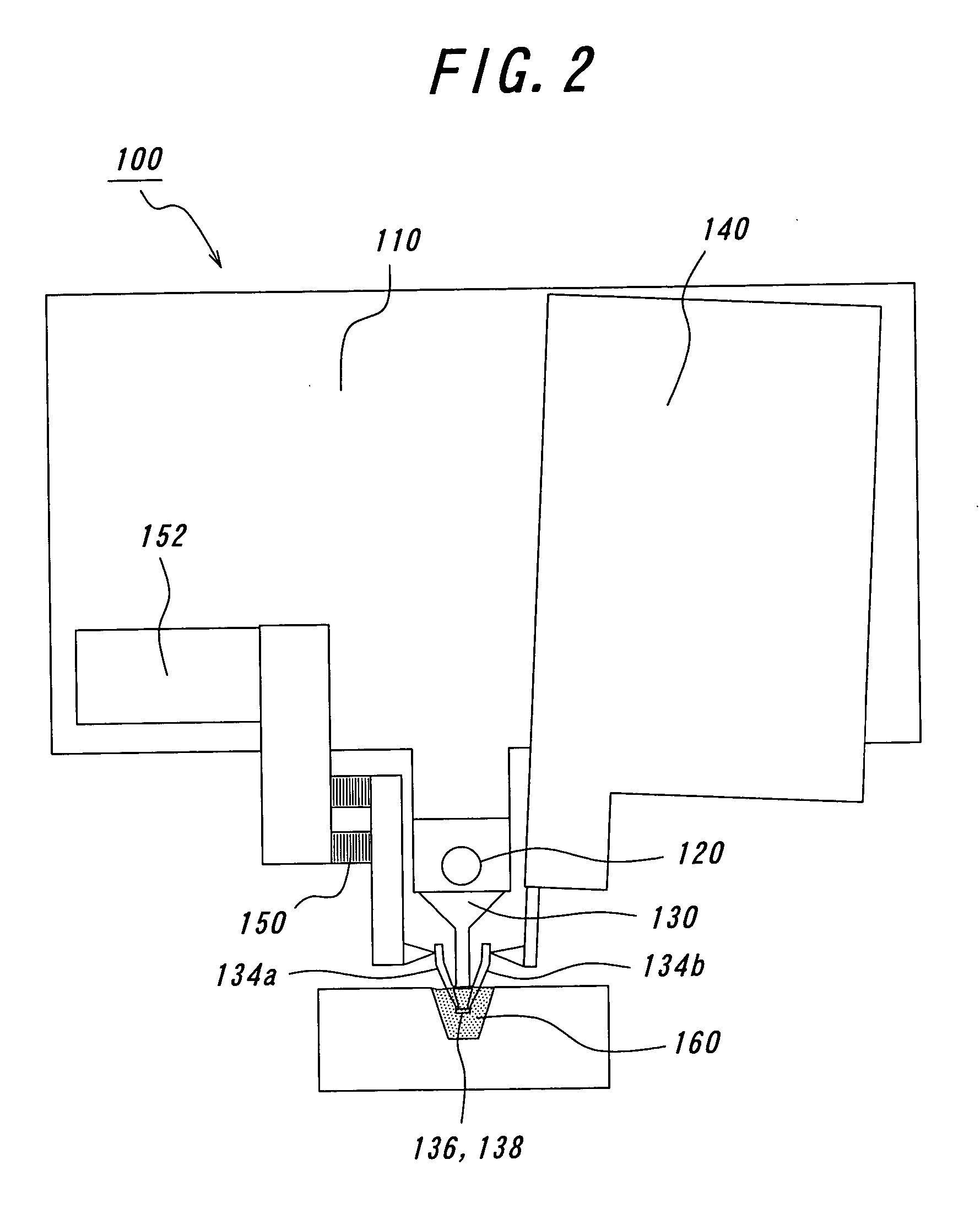Mechanochemical type sensor
a sensor and mechanical technology, applied in the field of mechanical sensors, can solve the problems of reducing the detection speed and sensitivity of material to the receiving member of the apparatus, affecting the accuracy of measurement, and reducing the size of the material having a detector function, so as to reduce the disturbing effect and improve the accuracy of measurement.
- Summary
- Abstract
- Description
- Claims
- Application Information
AI Technical Summary
Benefits of technology
Problems solved by technology
Method used
Image
Examples
Embodiment Construction
[0037] First, detailed description of the principle of the present invention and its operation will be given.
[0038] According to the present invention, a functional material is applied to a minute structure body prepared in advance to be integrated thereto. This brings about many advantages: the functional material becomes small in size or miniaturized; handling of the functional material becomes easy; detection speed / sensitivity is improved; the medium for receiving a test sample is allowed to have a small volume; and the simultaneous detection of signals from plural samples is made possible. Since a minute structure body is very small in size, even if a material having a low compliance is used to constitute an elastic deformation-sensitive portion of the structure body, the portion can work satisfactorily because of size-effect, while it is still possible to maintain the resonant frequency of the portion at a high level. This allows the sensor to precisely detect the change of a ...
PUM
| Property | Measurement | Unit |
|---|---|---|
| thickness | aaaaa | aaaaa |
| thickness | aaaaa | aaaaa |
| thickness | aaaaa | aaaaa |
Abstract
Description
Claims
Application Information
 Login to View More
Login to View More - R&D
- Intellectual Property
- Life Sciences
- Materials
- Tech Scout
- Unparalleled Data Quality
- Higher Quality Content
- 60% Fewer Hallucinations
Browse by: Latest US Patents, China's latest patents, Technical Efficacy Thesaurus, Application Domain, Technology Topic, Popular Technical Reports.
© 2025 PatSnap. All rights reserved.Legal|Privacy policy|Modern Slavery Act Transparency Statement|Sitemap|About US| Contact US: help@patsnap.com



